Umeboshi, or Japanese pickled plums, are the jewels in the crown of Japan’s pickling tradition. They have been consumed for over a thousand years, first as a medicine, thought to prevent fatigue, purify water, and purge toxins, and later as a flavorful condiment. Mitoku’s umeboshi are made following an ancient, all-natural process, refined over centuries in the villages of Wakayama prefecture.
These organically grown Japanese plums are salt pickled, one of the simplest and most common methods of food preservation. This means no refined sugar, synthetic ingredients, or preservatives are used whatsoever. The plums are then soaked with zesty shiso leaf to impart color, flavor, and aroma, as well as the antibacterial and preservative qualities traditionally associated with the herb.
The resulting umeboshi have all the eye-opening tang and tartness you might expect, but are balanced with a mellowness derived from the slow and careful production process. The acidity of the umeboshi comes from naturally occurring citric and malic acids, which have been said to possess therapeutic properties since ancient times.
-
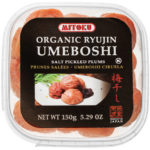
Organic Umeboshi
Made by producers who adhere strictly to traditional methods, our umeboshi are pickled using sea salt and left to dry naturally in the open air. In the final stages of production, the plums are infused with shiso leaf, which adds flavor and gives them their vibrant red color.
Upon biting into an umeboshi, you will immediately be struck by a powerful jolt of acidity. The flavor is simple, immediate, and free from any unpleasant additives. Show more...

Organic Umeboshi Paste
Umeboshi Paste is a ready-to-use product made from organic umeboshi that have been pitted, mashed, and tubed. This handy and versatile paste can be substituted for umeboshi in almost any recipe. Umeboshi Paste adds a pleasing tartness to salad dressings, cooked vegetables, and sauces.
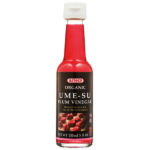
Organic Umeboshi Vinegar
Ume vinegar is a delicious byproduct of the umeboshi production process, made from the brine in which the umeboshi are steeped. This brine is infused with shiso, a herb with a unique flavor that combines citrusy, zesty, and spicy notes. The leaves work to add color and flavor to umeboshi and its brine, and are also thought to impart antibacterial and preservatives qualities to the pickling process.Show more...
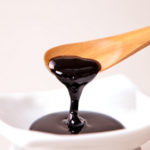
Ume Concentrate
This traditional ume concentrate, known as bainiku ekisu (plum extract), was developed in Japan a few hundred years ago to concentrate the healing properties of ume. Sour green ume plums are slowly cooked down to obtain their most active ingredients in a highly concentrated form. The resulting dark, sticky, thick liquid is usually mixed with hot water and honey and drunk as a tonic. The citric acid content of the plums is concentrated tenfold, which is equivalent to about twenty-five times the content found in lemon juice.
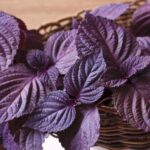
Ume Shiso Sprinkle
This traditional Japanese condiment is a delicious and healthful alternative to table salt. It imparts a zesty, salty-tart flavor that is especially appealing sprinkled on grains, tofu dishes, and salads. This condiment is made with fresh shiso (perilla herb) leaves that are first pickled with umeboshi then sun-dried and powdered.

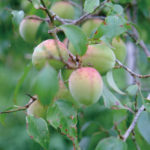
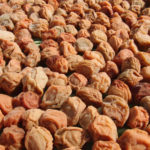
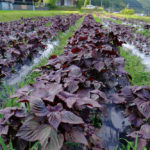
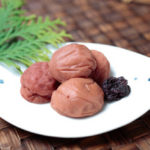
Wakayama Prefecture, referred to by some as Japan’s “fruit kingdom”, is located just south of Kyoto at the tip of the Kii peninsula on the main island of Honshū. The region’s mild climate, plentiful rain, and sheltered geographical conditions provide an ideal environment for fruit cultivation, and one of the most famous fruits grown in this fertile land is the Japanese plum or ume. Mitoku’s umeboshi are produced here, in the heart of Japan’s most famous pickled plum region.
The ume harvest takes place over just two months in June and July. This critical period will determine stock levels for the rest of the year. Here, as in the other stages of production, timing is of the essence. The plums must be gathered at just the right stage to maximize their potential. Too early, and the plum will be hard and unappetizing. Too late, and the overripe plum will be soft, mushy, and tasteless. One of our producers, located in the village of Ryujin, Tanabe, picks their plums relatively early, in the first week of June when the plum is green and firm. These young plums have not yet ripened and are at their peak levels of acidity.
As their plums are naturally cultivated, they are strongly affected by the weather and other factors, meaning that their flavor will vary from year to year. This also means that they will be irregular in shape and must be sorted after harvesting. Initial sorting is done mechanically by size, after which the plums must be inspected manually to check for signs of ripening or damage. The plums that pass this inspection will eventually become umeboshi, while the rest will be used to make other ume products. Once the plums have been sorted, they are washed and soaked in water to remove any bitterness. The soaking method varies greatly according to the particular characteristics of each plum. The producer must pay close attention to each detail and adapt accordingly to produce umeboshi of the highest quality.
After soaking, the plums are pickled in large tanks, which vary in size from three to five tons. Once a layer of plums has been added, a glittering layer of sea salt is sprinkled on top. Alternating layers of salt and plums are added until the tank is full. The salt plays a vital role in preventing the growth of undesirable microorganisms.
As the salt penetrates the flesh of the plum, the inner liquid, known as ume-su (plum vinegar), is drawn out. The heavy lid of the tanks puts pressure on the tightly packed mixture inside, keeping the plums submerged in their own juices. The plums are kept in their tanks until July. Once the pickling process is complete, the plums are removed and placed outside to dry in the humid midsummer heat. During this stage, the plums are rotated to ensure that they dry evenly. Extra special care must be taken here to ensure that the delicate skins do not crack.
Once the plums have dried, they are stored indoors to mature. Freshly dried umeboshi is highly acidic, but the storage process allows the plums to mellow, producing a more well-rounded flavor. During production, the flavor of the umeboshi is not static, but dynamic and constantly changing. For this reason, the skill of the manufacturer in monitoring and adapting to these changes is of the upmost importance.
The final step is to soak the umeboshi in shiso perilla leaf to add flavor, aroma, and color. Umeboshi this has been steeped with shiso is known as “red umeboshi”, due to its vivid scarlet colour, and ume vinegar that has been steeped in shiso is known as “red ume vinegar”. The zesty flavors of the shiso provide a perfect complement to the acidity of the umeboshi. This completes the umeboshi making process.
Umeboshi and umeboshi paste are lively and versatile seasonings that add a pleasant tartness to salad dressings, cooked vegetables, and sauces. Umeboshi is also commonly served in Japan as a condiment with rice, or tucked inside a rice ball wrapped with nori. In the summer, thick cucumber rounds spread thinly with umeboshi paste are a cooling treat. Sparingly spread on cooked sweet corn, it is a delicious, healthful alternative to butter and salt. Umeboshi also goes well with members of the cabbage family, including broccoli, kale, and cauliflower.
When using whole pickled plums, it is usually necessary to remove the pit and mince the flesh before adding it to recipes. As a more convenient option, Mitoku Umeboshi Paste can be substituted for umeboshi in virtually any recipe.
The shiso leaves that are often packaged with umeboshi are also delicious when chopped and used as a seasoning inside nori rolls or when tossed in with steamed or sautéed vegetables.
Umeboshi vinegar, or ume-su, contains nutrients associated with pickled plums, and it is easy and convenient to use. Both pleasantly tart and salty, umeboshi vinegar is a versatile seasoning that is especially refreshing on hot afternoons. Use umeboshi vinegar to liven up salad dressings, homemade quick pickles, and tofu spreads. It adds a pleasantly pungent flavor to cooked leafy greens (especially cabbage), cauliflower, broccoli, and green beans. Steam, boil, or sauté vegetables until tender but still vivid in color. Drain if necessary, place in a serving bowl, and toss with umeboshi vinegar to taste. When substituting umeboshi vinegar for other types of vinegar, substantially reduce the amount used, or eliminate the salt in the recipe. The following recipes will help you become familiar with umeboshi and umeboshi vinegar and will soon have you discovering new ways to use these delicious and healthful seasonings.
Related Recipes


